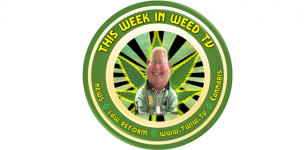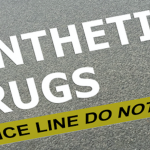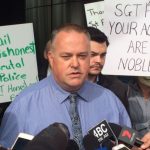Redefining Medical Cannabis: An Interview with This Week in Weed TV’s Loren Paul Wiener

Australian Greens leader Richard Di Natale moved a disallowance motion through the federal Senate on June 13 this year, which allowed terminally ill patients to import up to three months’ worth of medical marijuana products from overseas.
The motion reversed changes that were made to the Therapeutic Goods Administration’s (TGA) Special Access Scheme (SAS) by former health minister Sussan Ley in November last year that prohibited dying patients from accessing the medicines via Category A of that scheme.
The SAS is a formal arrangement that allows patients to import unapproved therapeutic goods into the country. The prohibition meant that patients with a limited amount of time left had to go through the complicated Category B process that can take up to 6 months.
Last week, it came to light that the government has blocked this access again. The Office of Drug Control (ODC) sent out an email warning importers that they would be in breach of their licences and permits if they supplied “any imported medicinal cannabis product to a patient under SAS-A.”
The illusive product
In February this year, Australian health minister Greg Hunt announced an interim medical marijuana importation scheme, and the first two batches from Canada arrived in the country in May. But by the end of the month, it was reported the products were still sitting in warehouses.
The fast-tracked importation scheme was to help fill the gap in the local market, while domestic production gets up and running.
The federal government introduced the Narcotics Drugs Amendment Bill in February last year. The bill allows for “the cultivation and production of cannabis and cannabis resin for medicinal and scientific purposes, and for the manufacture of narcotic drugs.”
Whilst many Australians believe that medicinal cannabis is readily available in the country today, it’s not. Out of the tens of thousands of patients who use cannabis medicines, very few can get their hands on any legal medicinal marijuana products.
The Australian Department of Health website states that by August 23 this year, a total of 18 licences had been issued. Eight of these are for commercial cultivation and production, five are research licences, and another five are manufacturing licences.
“Even with those licences granted, it will be some time before domestically produced products are available to the public,” the department outlines.
Little known developments
Loren Paul Wiener is a member of the Australian cannabis law reform movement. The long-time medical marijuana advocate hails from the United States, but has been campaigning in this country for the last ten years.
Mr Wiener is concerned about some of the developments in medicinal cannabis legislation that have largely gone unnoticed, such as the redefining of the medicinal cannabis products so as to include substances that don’t actually contain any marijuana.
Sydney Criminal Lawyers® spoke with Loren Paul Wiener – who produces the website and podcasts This Week in Weed TV – about the implications of redefining the products, NSW Labor’s breakthrough legislation, and why it’s so difficult for patients to get their hands on any legal medicine.
Firstly, you’ve raised concerns over Australian state governments changing the definition of what constitutes a medicinal cannabis product, specifically in the Queensland legislation, as well as the Victorian.
So Loren, how are these products being redefined? And why’s this concerning?
It started in Victoria with the result of the Victorian Law Reform Commission that was hired on behalf of the Andrews government. The issue with all of this is truth, honesty and clarity.
Some of the first bills in Victoria that started all this off were changing the definition of what cannabis was.
You’ve got to take a tiny step back and look at 2014, when politicians promised if they got elected, they would legalise medical cannabis for sick kids. This was a mother with sick kids promise initiative, pretty much across the country.
Then in 2015, a survey came out that showed 94 percent of the Australian population supported medicinal cannabis. Speaking to MPs after that, they kind of freaked out a little bit. They didn’t expect the survey. And they didn’t expect the numbers to be that high.
So effectively they needed to fill those promises. And what they did to do that is they spent 2015/16 redefining the definition of the term medical cannabis. Whatever state does it last does it more thoroughly than the one previously.
Victoria did it, and then did some more. Then it wound up with Queensland at the end of 2016, basically, changing the definition of medicinal cannabis, to where it doesn’t need to include cannabis.
There’s been a development in regards to this with the opioid pain medication Fentanyl that has been linked to overdose deaths in countries like Canada and Australia. Can you tell us about that?
The weird thing with that is a bill came out in Queensland that stated medical cannabis could include synthetics for the first time. That bill was passed in October 2016.
Earlier in 2016, a media pack came out from the Queensland Department of Health that changed the definition of the synthetic opiate Fentanyl, also called Subsys, by a company called Insys. It redefined the synthetic opioid to a synthetic cannabinoid.
The obvious concern I had was it was a typo. So whoever wrote that got confused. I phoned the department and they said, “It’s no mistake it’s actually pre-empting the Queensland bill that is coming out.” It was a media pack essentially for this bill.
Then when the Queensland bill came out, it didn’t use the words specifically Fentanyl, but it said synthetics. It’s in clause 7 of the Queensland bill. It says that anything that acts like cannabis, including synthetics, is effectively a medical cannabis product.
So you have one thing that says Fentanyl is a synthetic cannabinoid. And then you have the actual bill that mentions synthetics.
The federal government has passed legislation to allow for the legal cultivation and manufacture of medical cannabis products. The Victorian government has also passed similar legislation. However, patients can’t access any Australian made product.
What’s the hold up with cannabis medicine being produced in this country?
First off, they don’t want anybody to have it if it’s got THC in it. If you go back to the reason why they changed the definition of medical cannabis – that doesn’t include cannabis – is that they don’t want anybody to have it.
Effectively, we’ve only had one person that has had access to it, and that was via the TGA Category A. And as soon as that one person got it, they called it a loophole and they stopped it.
Because they’ve changed the definition of medicinal cannabis to include other products, those other products are semi-available. But, there’s no cannabis in them.
So, if you’re a person with cancer, or a sick kid with epilepsy, and you’re taking black market illegal cannabis oil that’s made from real cannabis products, all of a sudden, they’re saying they’re going to legalise this other product and call it the same thing, but it’s not.
Most people don’t care about it, because it’s not what it says on the label. And the government doesn’t want anybody to have it anyhow, because then they’ll know what it says on the label.
So they put out red tape over red tape to prevent it in many different ways.
In February this year, Australian health minister Greg Hunt announced an interim medical marijuana importation scheme. You’ve raised criticisms about these imported products. Could you outline what they are?
Absolutely, the initial product that came in is what they call an isolate. It’s not cannabis for medicinal purposes. It has no THC in it. It doesn’t have full cannabinoids in it.
Cannabis itself is a plant that has 110 plus cannabinoids and 400 other elements. The product that they’ve imported, even the product that they call “pure THC” isn’t. Effectively, it’s a very, very low dosage.
There’s a standard globally for dosage of medical cannabis products. They call it the RSOP (Rick Simpson oil protocol) and that says that a dosage is a gram a day or 100 milligrams a day for cancer and half of that for things like epilepsy and other conditions.
It’s that simple. This product that’s come in instead of it being a gram a day for dosage, it’s a 30th of a gram a day. So a whole bottle of that stuff, if it was a gram a day, thirty days in a month, it would need to be 30 grams of THC in a bottle. It’s one gram in an entire bottle.
These bottles, if they were available, would be $350, and you would need 30 of those making it $7,000 a month, or $3,500 a month for half a dosage.
The whole reason why they legalised cannabis around the world was so people didn’t have to buy their kids medicine from the black market. So even if it wasn’t a lousy product – they don’t even call it cannabis from where it comes from – it just doesn’t fit the purpose.
Where this stuff comes from in Canada, they don’t call it cannabis. That’s an important thing. If you order a beer and you get a glass of milk, and say, “In our country we call that beer.” Well, I’m sorry that’s milk, it’s not the same thing.
The government is calling it medical cannabis. But they don’t call it medical cannabis. They call it CBD, or pharmaceutical, or isolate. They call it what it is. It isn’t medical cannabis.
In June, a disallowance motion passed through the Senate, reversing a federal government prohibition on terminally ill patients accessing cannabis medicine through the TGA Special Access Scheme Category A.
However, the ODC has sent out an email warning producers not to provide these patients access this way.
Why do you think the federal government is so against terminally ill patients having fast access to these products?
Again, what they try to do initially is create as small as group as possible. It was always a wrong idea to make a medicine that cures so many things. Ninety percent of the world that uses it legally does it for pain. So using it for palliative care is a very small percentage anyhow.
But, they effectively don’t want people to know that the products that they’re authorising aren’t good products. So the best way to do this is to prevent anybody from getting it.
The stuff that they’re importing – which we were talking about before, that isn’t very good – they’re saying, “We’re not going to allow it to be used by these other people either.”
There’s a lot of rhetoric there, but the bottom line is they’re just creating layers of red tape upon red tape. Whether it’s having to go through a specialist doctor that doesn’t exist, or a specialist that doesn’t exist. It’s just layers and layers of red tape.
The most important thing to remember is cannabis is illegal to be grown in Australia, even though they said that medical cannabis is legal.
Legal cannabis per the Office of Drug Control, the only stuff that can be grown is “demand form.” But the ODC defines demand as legal demand, and there are no conditions that legal demand of cannabis is legal for.
NSW Labor had a bill before parliament that was recently voted down. This bill had been hailed as a game changer by medicinal cannabis advocates.
What was different about this bill?
The ODC has basically said because there is no demand for legal cannabis with THC in it, there is going to be no licences for it, except for R&D licences, which means humans won’t get it for ten years.
The new bill – which is actually quite a good framework, and similar to what they’ve used globally – it does a few different things.
One is it enables the demand for legal cannabis. Because, it’s saying that if you’re already using cannabis – instead of having to go to doctors or specialists that don’t exist – you can go to your own GP. And if you’re GP signs off on it, then you’re protected as a patient.
It means that you go from nobody that can have access to medical cannabis with THC to potentially 10 percent of the general population. And that’s a game changer in itself.
But then it forces the government to look at supply, because it says in the interim you can buy from the black market, you can grow your own and you can make oil. None of that is available in the other bills.
All the other bills – about 10 or so that have passed – have been to protect the government and the pharmaceutical industry. Not to protect patients’ rights.
So this did that. And plus it’s quite a light framework, it’s only about 17 pages, versus 400 in some of the other bills. The bill that I have my amendment in had 500 amendments in it. With this particular bill only being 17 pages or so, it doesn’t deal with the baggage of all the other bills.
It just effectively protects patients’ rights by legalising real cannabis products that people may already be using, or oil, or to be able to make their own oil and medicine, and protecting them, rather than the pharmaceutical industry.
Last year, the Victorian state government passed the Drugs, Poisons and Controlled Substances Amendment Act 2016. The legislation was said to be aimed at ice, but it also had implications for cannabis.
What were they?
Quite severe really. The Law Institute of Victoria said it was the worst legislation they’d ever seen. The bill actually addressed ice, but never mentioned cannabis by name.
They used an old reference called “drugs of dependency.” And what effectively it did was introduce about ten new laws against cannabis, but unfortunately, the premier sold it as an ice bill in the media.
So he initially went on 3AW and they only put out 10 seconds of it, but it mentions it’s for cannabis and other drugs. But, when the mainstream media got it, it was all about ice, because that’s what his election promise was to do. It was all about ice, not cannabis.
It introduced ten new laws about cannabis, and patients. Even things like 10 years for sharing a book on cannabis. Again, it introduced quite a few different and serious laws. This bill was bad because it introduced laws against cannabis without using the word cannabis in the bill.
And lastly, Loren you’ve been a medical marijuana advocate for years. You’ve seen firsthand what’s happening in the States, in regards to recreational, as well as medicinal cannabis.
What do you foresee happening in this country in regards to marijuana medicine? Will patients actually gain legalised access to it in the near future?
It comes down to what people are aware of. The bill that we were talking about before that failed is up to go to the NSW upper house. It probably will be named the Adam Searle NSW Medical Cannabis Bill 2017. That’s due to go to the upper house in about a month to six weeks.
It’s pretty much a carbon copy of the other bill. And if folks support that bill we could have legal medical cannabis very soon.
There’s a large majority, unfortunately, of the community that prefers a different view of the world, which is legalising it for everybody on everything. If that happens you could wait 25 years, because Australia will never do it.
People have to come around to what we did in California 25 years ago. And the rest of the world has done since. There’s 220 million legal medical users of real medical cannabis products in just the US and Canada alone.
So this bill that they’re introducing in the NSW senate is effectively a better version of some of those bills from 21 years ago. It’s catching us up, and it is a game changer. The word you used applies to this one as much as the other one. It’s the same bill.
Loren, thanks very much for taking the time out to have this chat with us today.
My pleasure.







